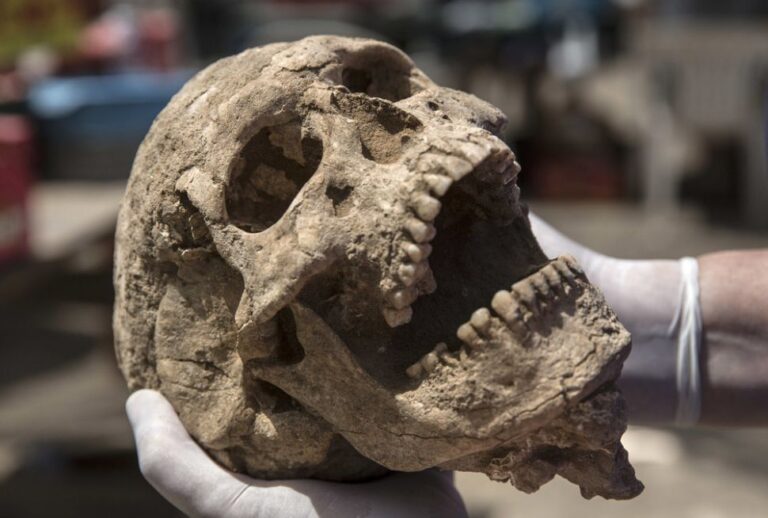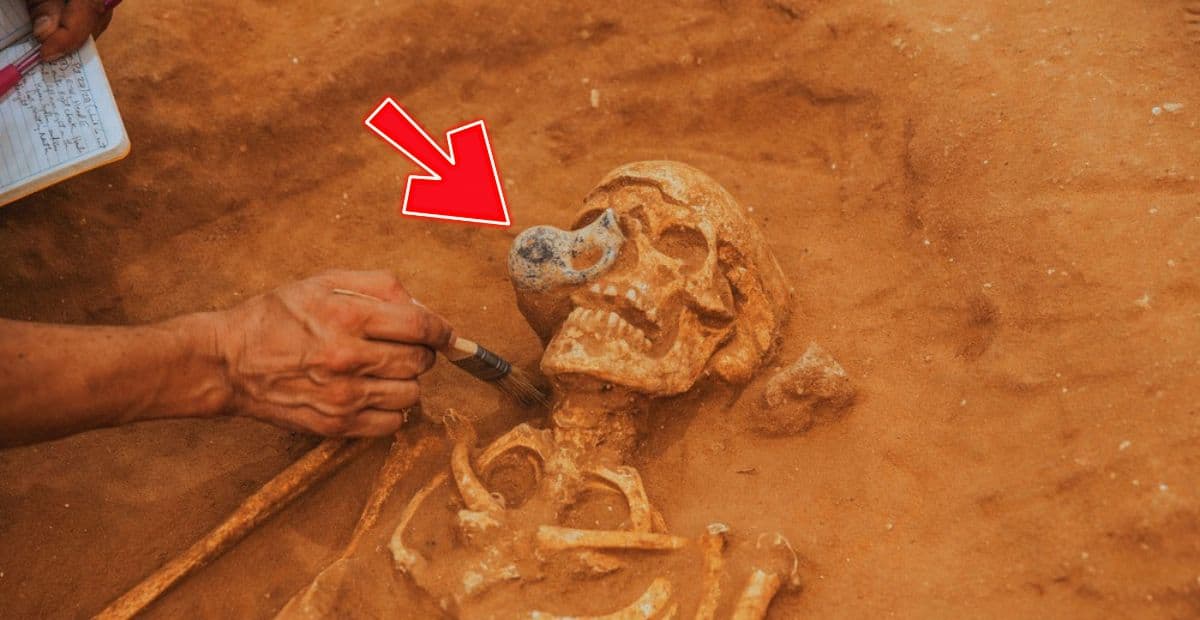3,000-Year-Old Skeleton Found in the Philistine Cemetery Had Juglet Stuck to Its Skull
Philistines were no “philistines”, say archaeologists who have unearthed a 3,000-year-old cemetery in which members of the biblical nation were buried along with jewelry and perfumed oil.
Little was known about the Philistines before the recent excavation in the Israeli port city of Ashkelon. The famed archenemies of the ancient Israelites – Goliath was a Philistine – flourished in this area of the Mediterranean, starting in the 12th century BC, but their way of life and origin has remained a mystery.
That stands to change after what researchers have called the first discovery of a Philistine cemetery. It contains the remains of about 150 people in numerous burial chambers, some containing surprisingly sophisticated items.

The team also found DNA on parts of the skeletons and hopes that further testing will determine the origins of the Philistine people.
We may need to rethink today’s derogatory use of the word philistine, which refers to someone averse to culture and the arts, said archaeologist Lawrence Stager, who has led the Leon Levy expedition at Ashkelon since 1985.
“The Philistines have had some bad press, and this will dispel a lot of myths,” he said.
His team dug down about three meters (10ft) to uncover the cemetery, which they found to have been used centuries later as a Roman vineyard. On hands and knees, workers brushed away layers of earth to reveal the brittle bones of entire Philistine skeletons reposed as they were three millennia ago.
Decorated juglets believed to have contained perfumed oil were found in graves. Some bodies were still wearing bracelets and earrings, while others had weapons.
The archaeologists also discovered some cremations, which the team says were rare and expensive for the period, and some larger jugs contained the bones of infants.

“The cosmopolitan life here is so much more elegant and worldly and connected with other parts of the eastern Mediterranean,” Stager said, adding that this was in contrast to the more modest village lifestyle of the Israelites who lived in the hills to the east.
Bones, ceramics and other remains were moved to a tented compound for further study and some artifacts were reconstructed piece by piece. The team mapped the position of every bone removed to produce a digital 3D recreation of the burial site.
Final reports on the finds are being published by the Semitic Museum at Harvard University.




